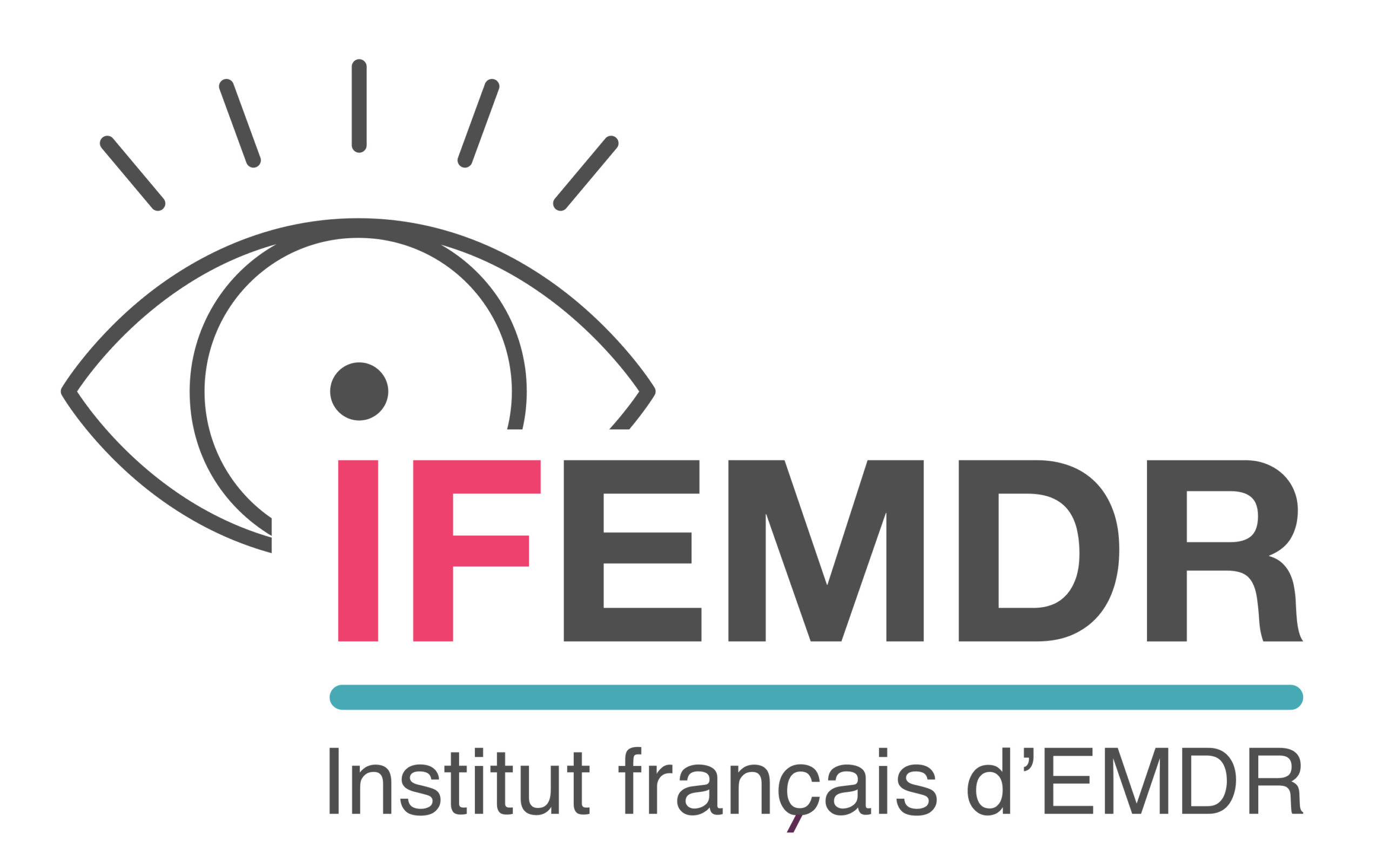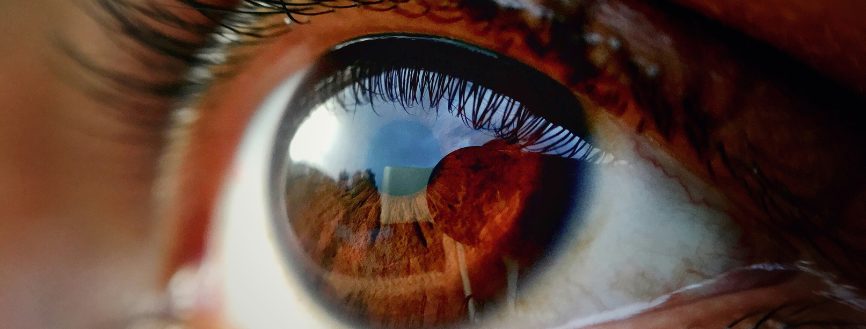
Bibliographie EMDR et dépendances
Mis à jour le 19 décembre 2023
Divers travaux ont été publiés concernant l’utilisation de l’EMDR dans le traitement des patients dépendants. Nous vous proposons cette bibliographie EMDR et dépendances, réalisée initialement par Michael Hase, et complétée ponctuellement au fil des nouveaux publications.
Bibliographie
ABEL N.J., O’BRIEN J.M. (2010) « EMDR treatment of co- morbid PTSD and alcohol dependence: A case example », Journal of EMDR Practice and Research, 4, 50-59. Présentation en français.
S. J. Adamson, J. D. Sellman, & C. M. Frampton (2009). Patient predictors of alcohol treatment outcome: A systematic review. Journal of Substance Abuse Treatment, 36, 75–86.
Albers, J. (2010, July). The interplay of resourcefulness and resilience in recovery: A six session approach treating addictive behaviour, an extended EMDR protocol. Presentation at the 1st EMDR Asia Conference, Bali, Indonesia
Arch, J. J., Craske, M. G., Stein, M. B., Sherbourne, C. D., & Roy-Byrne, P. P. (2006). Correlates of alcohol use among anxious and depressed primary care patients. General hospital psychiatry, 28(1), 37-42.
Bae, H., & Kim, D. (2012). Desensitization of triggers and urge reprocessing for an adolescent with internet addiction disorder. Journal of EMDR Practice and Research, 6(2), 73-81.
H. Bae, C. Han, & D. Kim (2013). Desensitization of triggers and urge reprocessing for pathological gambling: A case series. Journal of Gambling Studies, 31(1), 331–342.
Bales, A. M. (2023). Trauma-Informed Treatment for Alcohol Use Disorder: Improving Long-Term Recovery.
J. Barbieri (2008). The URGES approach: Urge reduction by growing ego strength (URGES) for trauma/addiction treatment using alternate bilateral stimulation, hypnotherapy, ego state therapy and energy psychology. Sexual Addiction and Compulsivity, 15, 116–138.
Beckham, J. C., Feldman, M. E., Vrana, S. R., Mozley, S. L., Erkanli, A., Clancy, C. P., & Rose, J. E. (2005). Immediate antecedents of cigarette smoking in smokers with and without posttraumatic stress disorder: a preliminary study. Experimental and clinical psychopharmacology, 13(3), 219.
BEUTEL M. (1999) « Sucht und sexueller Migbrauch », Psychotherapeut, 44, 313-319.
BOENING J.A. (2001) « Neurobiology of an addiction memory », Journal of Neural Transmission, 108, 6, 755-65.
Brandtner, A., Pekal, J., & Brand, M. (2020). Investigating properties of imagery-induced flash-forwards and the effect of eye movements on the experience of desire and craving in gamers. Addictive Behaviors, 105, 106347. Présentation en français
Brennstuhl, M. J., Tarquinio, C., & Bassan, F. (2019). EMDR et addiction. Aide-mémoire-EMDR: en 46 fiches.
Breslau, N., Davis, G. C., Andreski, P., & Peterson, E. (1991). Traumatic events and posttraumatic stress disorder in an urban population of young adults. Archives of general psychiatry, 48(3), 216-222.
Brown, S. H., Gilman, S. G., Goodman, E. G., Adler-Tapia, R., & Freng, S. (2015). Integrated trauma treatment in drug court: Combining EMDR and seeking safety in drug court. Journal of EMDR Practice and Research, 9(3), 123-136.
Brown Susan (2021) Addiction : A Solution That Becomes a Problem, Treatment Challenges in a COVID-19, EMDR International Association. (2021, June). EMDR Therapy and Addiction. Go With That magazine, 26(2). Présentation en français.
G. Caselli, & M. M. Spada (2015). Desire thinking: What is it and what drives it? Addictive Behaviors, 44, 71–79.
J. J. Cecero, & K. M. Carroll (2000). Using eye movement desensitization and reprocessing to reduce cocaine cravings. American Journal of Psychiatry, 157, 150–151.
Chodkiewicz, J. (2023). The conceptual basis of addiction memory, allostasis and dual processes, and the classical therapy of addiction. Advances in Psychiatry and Neurology/Postępy Psychiatrii i Neurologii, 32(3), 156-161.
Cottler, L. B., Compton, W. M., Mager, D., Spitznagel, E. L., & Janca, A. (1992). Posttraumatic stress disorder among substance users from the general population. American journal of Psychiatry, 149(5), 664-670.
R. P. Cox, & M. D. Howard (2007). Utilization of EMDR in the treatment of sexual addiction: A case study. Sexual Addiction and Compulsivity, 14, 1–20.
de Veer, M. R., Waalboer-Spuij, R., Hijnen, D. J., Doeksen, D., Busschbach, J. J., & Kranenburg, L. W. (2023). Reducing scratching behavior in atopic dermatitis patients using the EMDR treatment protocol for urge: A pilot study. Frontiers in Medicine, 10, 1101935.
Demmel, R., & Hagen, J. (2003). The comprehensive alcohol expectancy questionnaire: I. scale development. Sucht, 49(5), 292-299.
Demmel, R., & Hagen, J. (2003). The Comprehensive Alcohol Expectancy Questionnaire: II. Prediction of alcohol use and clinical utility. Sucht, 49(5), 300-305.
EMDR International Association. (2021, June). EMDR Therapy and Addiction. Go With That magazine, 26(2).
N. A. Enoch (2011). The role of early life stress as a predictor for alcohol and drug dependence. Psychopharmacology, 214(1), 17–31.
FELITTI V.J. (2002) « The relationship of adverse child-hood experiences to adult heatth: Turning gold into lead », Zeitschnft für Psychosomatische Medizin und Psychotherapie, 48, 4, 359-69. HASE M. (2003) « YOU’li never walk atone – Trauma und Sucht Über die Konvergenzscheinbar divergierender Konzepte », in Mehr als abheingig ? Schlafsteirungen : Trauma, Betdubung, Behandlung, Jellinek C., Bellmann GU., Westermann B., Freiburg, Lambertus-Verlag, p. 127-145.
Freeman, T., & Kimbrell, T. (2004). Relationship of alcohol craving to symptoms of posttraumatic stress disorder in combat veterans. The Journal of nervous and mental disease, 192(5), 389-390.
N. Gielen, R. C. Havermans, M. Tekelenburg, & A. Jansen (2012). Prevalence of post-traumatic stress disorder among patients with substance use disorder: It is higher than clinicians think it is. European Journal of Psychotraumatology, 3, 17734.
R. Z. Goldstein, & N. D. Volkow (2011). Dysfunction of the prefrontal cortex in addiction: Neuroimaging findings and clinical implications. Nature Reviews. Neuroscience, 12, 652–669.
HAN, C., & BAE, H. (2023). Eye movement desensitization and reprocessing, EMDR for addiction: A case series. Journal of Behavioral Addictions, 12.
Hapke, U., Schumann, A., Rumpf, H. J., John, U., Konerding, U., & Meyer, C. (2005). Association of smoking and nicotine dependence with trauma and posttraumatic stress disorder in a general population sample. The Journal of nervous and mental disease, 193(12), 843-846.
Harvey, L. R., & Kullack, C. (2023). EMDR Therapy and Addiction.
HASE M., SCHALLMAYER S., SACK M. (2008) « EMDR reprocessing of the addiction memory: Pretreatment, post treatment, and 1-month follow-up. », Journal of EMDR Practice and Research, 2, 3, 170-180.
Hase, M. (2009). CravEx : An EMDR approach to treat substance abuse and addiction. In M. Luber (Ed.), Eye movement desensitization (EMDR) scripted protocols: Special populations (pp. 467-488). New York, NY: Springer Publishing Co.
Hase, M. H. (2009). [Reprocessing of the addiction EMDR method]. In R. Plassmann (Ed.), Im eigenen rhythmus, die EMDR-behandlung von essstörungen, bindungsstörungen, allergien, schmerz, angststörungen, tinnitus und süchten (pp. 165-172). Giessen, Germany: Psychosozial-Verlag. German
HASE M. (2010) « CraveEx: An EMDR approach to treat substance abuse and addiction », in EMDR scripted pro-tocols, Luber M., New York, Norton, p. 467-488.
HASE M. (2016) « L’EMDR dans le traitement de la dépendance aux substances« , publié dans livre Pratique de la psychothérapie EMDR, Introduction et approfondissements pratiques et psychopathologiques, vient de paraitre aux éditions Dunod
Hase, M. (2019, June). EMDR and addiction disorders. Presentation at the 20th EMDR Europe Association Conference, Krakow, Poland
L. Hendriks, R. de Kleine, M. van Rees, C. Bult, & A. van Minnen (2010). Feasibility of brief intensive exposure therapy for PTSD patients with childhood sexual abuse: A brief clinical report. European Journal of Psychotraumatology, 1, 5626.
HEYNE A., MAY T., GOLL P., WOLFFGRAMM J. (2000) « Persisting consequences of drug intake : towards a memory of addiction », Journal of Neural Transmission, 107, 6, 613-38.
HEYNE A., WOLFFGRAMM J. (1998) « The development of addiction ta d-amphetamine in an animal model : same principles as for alcohol and opiate. » Psychopharmacology, 140, 4, 510-8.
HIEN D.A., JIANG H., CAMPBELL A.N.C., Hu MC., MIELE GM., COHEN L.R., BRIGHAM G.S., CAPTICK C., KULAGA A., ROBINSON J., SUAREZ-MORALES L., NUNES E.V. (2010) « Do treatment improvements in PTSD severity affect substance use outcames ? A secondary analysis from a randmized clinical trial, in NIDAs clinical trials network », American Journal of Psychiatty, 167, 95-101. Journal of Psychoactive Drugs, 46(4), 303-309. http://www.ncbi.nlm.nih.gov/pubmed/25188700
H. K. Hornsveld, & W Markus. (2014, June). EMDR & addiction. In EMDR clinical specialty—Addictions symposium (Lynn Keenan, Chair). Symposium presented at the 15th EMDR Europe Association Conference, Edinburgh, Scotland.
H. K. Hornsveld, & W. Markus (2016a). Palette of EMDR interventions in addiction (PEIA). Overview of interventions for EMDR in the treatment of substance use disorders and behavioral addictions (Dutch version). Retrieved from www.hornsveldpsychologenpraktijk.com
H. K. Hornsveld, & W. Markus (2016b). Palette of EMDR interventions in addiction (PEIA). Overview of interventions for EMDR in the treatment of substance use disorders and behavioral addictions (English version). Retrieved from www.hornsveldpsychologenpraktijk.com
Kennedy, E. V., Holderied, M. W., Mair, J. M., Guzman, H. M., & Simpson, S. D. (2010). Spatial patterns in reef-generated noise relate to habitats and communities: evidence from a Panamanian case study. Journal of Experimental Marine Biology and Ecology, 395(1-2), 85-92.
E. J. Khantzian (1985). The self-medication hypothesis of addictive disorders: Focus on heroin and cocaine dependence. American Journal of Psychiatry, 142, 1259–1264.
Knipe, J. (2005). Targeting positive affect to clear the pain of unrequited love, codepen- dence, avoidance, and procrastination. In R. Shapiro (Ed.), EMDR Solutions: Pathways to Healing (pp.189-212). New York, NY: W. W. Norton.
Knipe, J. (2010). Dysfunctional positive affect. In M. Luber (Ed.), Eye movement desensitiza- tion and reprocessing (EMDR) scripted proto- cols: Special populations (pp. 451-466). New York, NY: Springer Publishing.
Kulka, R. A., Schlenger, W. E., Fairbank, J. A., Hough, R. L., Jordan, B. K., Marmar, C. R., & Weiss, D. S. (1990). Trauma and the Vietnam war generation: Report of findings from the National Vietnam Veterans Readjustment Study. Brunner/Mazel.
C. Kullack, & J. Laugharne (2016). Standard EMDR protocol for alcohol and substance dependence comorbid with posttraumatic stress disorder: Four cases with 12-month follow-up. Journal of EMDR Practice and Research, 10(1), 33–46.
Kullack, Laugharne (2017) Le protocole EMDR standard pour la dépendance à l’alcool et à d’autres substances psychoactives en comorbidité avec un état de stress post-traumatique : quatre cas avec un suivi après 12 mois, Journal of EMDR Practice and Research, Volume 11, Number 2, 2017, pp. 45E-60E(16)
Liang, T. (2017, April). Faith-based trauma-informed treatment for sexual addiction: A case illustration. In EMDR in various cultural contexts & special populations (Matthew Woo, Chair). Presentation at the 3rd EMDR Asia International Conference, Shanghai, China
Lillieroth, L., & Hase, M. (2018, June). Working with the CravEx EMDR Add-protocol exemplified in work with a client with sex and love addiction. In EMDR in addiction treatment. Presentation at the 19th EMDR Europe Conference, Strasbourg, France
Littel, M., van den Hout, M. A., & Engelhard, I. M. (2016). Desensitizing addiction: Using eye movements to reduce the intensity of substance-related mental imagery and craving. Frontiers in Psychiatry, 7, 14. Lire le résumé en français
Logsdon, E., Cornelius-White, J. H., & Kanamori, Y. (2023). The Effectiveness of EMDR With Individuals Experiencing Substance Use Disorder: A Meta-Analysis. Journal of EMDR Practice and Research.. Présentation en français.
Luteijn, I., VanderNagel, J. E., van Duijvenbode, N., de Haan, H. A., Poelen, E. A., & Didden, R. (2020). Post-traumatic stress disorder and substance use disorder in individuals with mild intellectual disability or borderline intellectual functioning: A review of treatment studies. Research in developmental disabilities, 105, 103753. Présentation en français.
Marich Jamie (2009) « EMDR in the Addiction Continuing Care Process: Case Study of a Cross-Addicted Female’s Treatment and Recovery », Journal of EMDR Practice and Research, 3, 2, 98-106.
Marich Jamie (2010) « Eye Movement Desensitization and Reprocessing in Addiction Continuing Care : A Pheno-menological Study f Women in Recovery », Psychology of Addictive Behaviors, 24, 3, 498-507.
Marich Jamie (2021) EThe Evolving Landscape of Healing Addiction with EMDR Therapy, MDR International Association. (2021, June). EMDR Therapy and Addiction. Go With That magazine, 26(2). Présentation en français.
Marich, J., & Mft, S. D. P. (2021). Healing Addiction EMDR Therapy: A Trauma-Focused Guide.
Markus, W., de Weert–van Oene, G. H., Woud, M. L., Becker, E. S., & DeJong, C. A. (2016). Are addiction-related memories malleable by working memory competition? Transient effects on memory vividness and nicotine craving in a randomized lab experiment. Journal of Behavior Therapy and Experimental Psychiatry, 52, 83-91.
Markus, W. & Hornsveld, H. K. (2017). EMDR interventions in addiction. Journal of EMDR Practice and Research, 11(1), 3-29.
Markus, W., de Kruijk, C., Hornsveld, H. K., de Weert-van Oene, G. H., Becker, E. S., & DeJong, C. A. J. (2019). Treatment of alcohol use disorder with adjunctive addiction-focused EMDR: A feasibility study. Journal of EMDR Practice and Research, 13(3), 187-220.
Markus, W., Hornsveld, H. K., Burk, W. J., de Weert–van Oene, G. H., Becker, E. S., & DeJong, C. A. (2020). Addiction‐focused Eye Movement Desensitization and Reprocessing Therapy as an Adjunct to Regular Outpatient Treatment for Alcohol Use Disorder: Results from a Randomized Clinical Trial. Alcoholism: Clinical and Experimental Research, 44(1), 272-283. Présentation en français
R. Martin-Fardon, E. P. Zorrilla, R. Ciccocioppo, & F. Weiss (2010). Role of innate and drug-induced dysregulation of brain stress and arousal systems in addiction: Focus on corticotropin-releasing factor, nociceptin/orphanin FQ, and orexin/hypocretin. Brain Research, 1314, 145–161.
Masson Joanic (2005) L’outil EMDR en alcoologie : réflexions théoriques et cliniques, de Joanic Masson, publié dans Psychothérapies 2/2005 (Vol. 25) , p. 117-123
R. K. McHugh, B. A. Hearon, & M. W. Otto (2010). Cognitive-behavioral therapy for substance use disorders. Psychiatric Clinics of North America, 33(3), 511–525.
Miller, R. (2010). The feeling-state theory of impulse-control disorder and the impulse- control disorder protocol. Traumatology, 16(3), 2-10. https://doi.org/10.1177/1534765610365912
Miller, R. (2012). Treatment of behavioral addictions utiliz- ing the feeling-state addiction protocol: A multiple baseline study. Journal of EMDR Practice and Research, 6(4), 159-169
Miller Julie (2021) EMDR and addiction : Stabilize addiction, EMDR International Association. (2021, June). EMDR Therapy and Addiction. Go With That magazine, 26(2). Présentation en français
Mitchell, O., Wilson, D. B., Eggers, A., & MacKenzie, D. L. (2012). Assessing the effectiveness of drug courts on recidivism: A meta-analytic review of traditional and non-traditional drug courts. Journal of Criminal Justice, 40, 60-71.
O’BRIEN JM., ABEL N.J. (2011) « EMDR, Addictions and the stages of change: A Road Map for Intervention », Journal of EMDR Practice and Research, 5, 3, 121-130.
J. Omaha (1998, July). Chemotion and EMDR: An EMDR treatment protocol based on a psychodynamic model for chemical dependency. Paper presented at the annual EMDR International Association Conference, Baltimore, MD.
Palumbo, R., Protokowicz, J., & Roberto, A. (2020). What You Need to Know: Eye Movement Desensitization and Reprocessing Therapy as a Path to Recovery for Patients With Substance Use Disorder. Journal of Addictions Nursing, 31(3), 225-226. Présentation en français
Payson, H. (2023). Reconnecting: Trauma, Addiction, and Group EMDR Therapy. EMDR Group Therapy: Emerging Principles and Protocols to Treat Trauma and Beyond, 233.
Perez-Dandieu B, Tapia G. (2014) Treating trauma in addiction with EMDR: A pilot study.. J Psychoactive Drugs. 2014 Oct-Dec;46(4):303-9. doi: 10.1080/02791072.2014.921744. PMID: 25188700. Lire un résumé en français
A. J. Popky (1992). Smoking cessation protocol. EMDR Network Newsletter, 2(3), 4–6.
Popky, A. J. (2005). DeTUR, an urge reduction protocol for addictions and dysfunctional behaviors. EMDR solutions: Pathways to healing, 167-188.
Popky, A. J. (2010). The desensitization of triggers and urge reprocessing (DeTUR) pro- tocol. In M. Luber (Ed.), Eye movement desen- sitization and reprocessing (EMDR) scripted protocols: Special populations (pp. 489-511). New York, NY: Springer Publishing
PROCHASKA J.O., DICLEMENTE C.C. (1984) The transtheoretical approach : crossing traditional boundaries of therapy, Homewood, IL : Dow-Jones-Irwin.
Qurishi, R., Markus, W., Habra, M. J. M., Bressers, B., & De Jong, C. A. J. (2017). EMDR therapy reduces intense treatment-resistant cravings in a case of gamma-hydroxybutyric acid ad- diction. Journal of EMDR Practice and Research, 11(1), 30-42.
N. P. Roberts, P. A. Roberts, N. Jones, & J. I. Bisson (2015). Psychological interventions for post-traumatic stress disorder and comorbid substance use disorder: A systematic review and meta-analysis. Clinical Psychology Review, 38, 25–38.
A. Rougemont-Bücking, & E. N. Zimmermann (2012). EMDR-based treatment of psychotraumatic antecedents in illicit drug abusers: A report of two cases. Schweizer Archiv für Neurologie und Psychiatrie, 163(3), 107–115.
Sgualdini, E., Favaro, N., Dal Lago, D., Cibin, M., & Chiamulera, C. (2023). A randomized study to compare the effects of EMDR added to TAU on substance memory in a residential addiction setting. Journal of Substance Use, 1-8. Présentation en français
F. Shapiro, S. Vogelmann-Sine, & L. Sine (1994). Eye movement desensitization and reprocessing: Treating trauma and substance abuse. Journal of Psychoactive Drugs, 26(4), 379–391.
SHAPIRO F. (2001) Eye Movement Desensitization and Reprocessing: Basic Principles, Protocols, and Procedures, New York, Guilford.
SHAPIRO F. (2002) « EMDR 12 years after its introduction: past and future research », Journal of Clinical Psychology, 58, 1, 1-22.
F. Shapiro (2010). Future template worksheet. In M. Luber (Ed.), Eye movement desensitization and reprocessing (EMDR) scripted protocols: Special populations (pp. 638–647). New York, NY: Springer Publishing.
R. Sinha (2008). Chronic stress, drug use, and vulnerability to addiction. Annals of the New York Academy of Sciences, 1141, 105–130.
Spitz, Y, Belveze P. et Spitz E (?) Intérêt de la thérapie EMDR dans la prise en charge des addictions, poster proposé dans le cadre du congrès de l’encéphale
Szpunar, K. K., Watson, J. M., & McDermott, K. B. (2007). Neural substrates of envisioning the future. Proceedings of the National Academy of Sciences, 104(2), 642-647.
Tapia, G. (2019). Review of EMDR interventions for in- dividuals with substance use disorder with/without comorbid posttraumatic stress disorder. Journal of EMDR Prac- tice and Research, 13(4), 345-360.
Tcheshmedjiev, I., & Farrell, D. (2023). The Effects of EMDR Therapy on Pregnant Clients With Substance Use Disorders: A Narrative, Scoping Literature Review. Journal of EMDR Practice and Research.
Teeravisutkul, P., Chumchua, V., Saengcharnchai, P., & Leelahanaj, T. (2019). Stress and craving reduction under treatment with heart rate variability biofeedback and the Phramongkutklao model among patients with alcohol use disorder. Psychology Research and Behavior Management, 619-627. Présentation de en français.
N. Ten Hoor (2014). EMDR bij exibitionisme [EMDR in exhibitionism]. EMDR Magazine, 6, 20–22.
Torregrossa, M. M., Corlett, P. R., & Taylor, J. R. (2011). Aberrant learning and memory in addiction. Neurobiology of learning and memory, 96(4), 609-623.
Tsouta, A., Fotopoulos, D., Zakynthinos, S., & Katsaounou, P. (2014). Treatment of tobacco addiction using the feeling-state addiction protocol (FSAP) of the eye movement de- sensitization and reprocessing (EMDR) treatment. Tobacco Induced Diseases, 12(Suppl 1):AA25. DOI:10.1186/1617-9625-12-S1-A25. Open access from: www.tobaccoinduceddis- eases.org/Treatment-of-tobacco-addiction- using-the-Feeling-State-Addiction-Protocol- FSAP-of,66666,0,2.html
van Namen, D. M., Hilberink, S. R., de Vries, H., Nagelhout, G. E., & van Staa, A. (2023). Impact of the Covid‐19 pandemic on students with relatives with addiction problems: A longitudinal qualitative study. Stress and Health.
Van Minnen, M., Markus, W., & Blaauw, E. (2020). Addiction-focused EMDR therapy in gambling disorder: A multiple baseline study. Journal of EMDR Practice and Research, 14(1), 46-59. Présentation en français
VOGELMANN-SINE S., SINE L.F., SMYTH N.J., POPKY A.J. (1998) EMDR Chemical Dependency Treatment Manual, Honolulu, Hawaii.
R. A. Wise, & G. F. Koob (2014). The development and maintenance of drug addiction. Neuropsychopharmacology, 39, 254–262.
Wise, A. & Marich, J. (2016). The perceived effects of standard and addiction-specific EMDR therapy protocols. Journal of EMDR Practice and Research, 10(4), 231-244.
Wolffgramm, J., & Heyne, A. (1995). From controlled drug intake to loss of control: the irreversible development of drug addiction in the rat. Behavioural brain research, 70(1), 77-94.
WOLFFGRAMM J., GALLI G., THIMM F., HEYNE A. (2000) « Animal models of addiction: modeLs for therapeu-tic strategies ? », Journal of Neural Transmission, 107, 6, 649-68.
Woodruff, E., Park, J., Howard, H., Gonzalez, M., & Jaber, T. (2023). Feasibility and Efficacy of Addiction-Focused Eye Movement Desensitization Reprocessing in Adults with Substance Use Disorder. Journal of Evidence-Based Social Work, 1-18.
Wrase, J., Grüsser, S. M., & Heinz, A. (2006). Cue-induced alcohol craving. Neurobiological correlates and clinical relevance. Der Nervenarzt, 77(9), 1051-2.
M. Yücel, D. I. Lubman, N. Solowij, & W. J. Brewer (2007). Understanding drug addiction: A neuropsychological perspective. Australian and New Zealand Journal of Psychiatry, 41(12), 957–968.
ZWEBEN J., YEARY J. (2006) « EMDR in the Treatment of Addictions », Journal of Chemical Dependency, 88, 2, 115-227
Aller plus loin
Formation(s) :
L’EMDR dans le traitement de l’abus de substances et de la dépendance
L’EMDR dans le traitement des addictions
Dossier(s) : EMDR et dépendances



